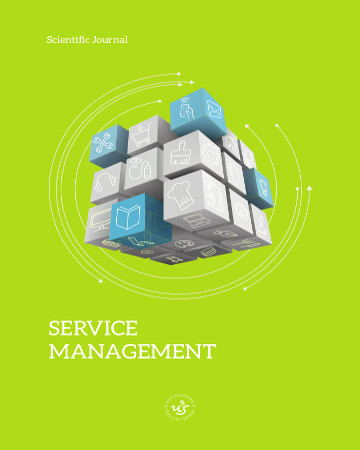
ISSN: 2450-8535
eISSN: 2353-2858
OAI
DOI: 10.18276/ejsm.2017.23-09


Lista wydań /
Vol. 23, 3/2017
Increasing the level of educational services quality in higher education
| Autorzy: |
Adam
Stecyk
University of Szczecin, Poland |
| Słowa kluczowe: | quality education higher education e-learning ICT |
| Data publikacji całości: | 2017 |
| Liczba stron: | 8 (71-78) |
| Klasyfikacja JEL: | I21 I23 I25 O32 |
Abstrakt
The aim of the article is a presentation of the model of improving the educational quality service in higher education. Analysis was based on the model that uses: SERVPERF method testing the quality of service, a Likert scale and new framework tool that identifies the main factors determining the quality of a structural, methodical and social area in higher education. The proposed research concept can be used to analyze level of service within the framework of specific subjects, teaching staff and teaching modes, such as blended learning mode. Assuming a proper (the best description of the nature of education and quality) selection of descriptive characteristics and transforming them into real determinants of quality, the proposed concept can be used to improve the quality in other organizations. The main argument of the article assumes that maintaining and expanding a competitive advantage in the market of educational services in higher education, requires monitoring and flexibility in the implementation of both, proven technology and new, innovative educational tools, what leads to increased level of quality, usability and efficiency of distributed knowledge.
Pobierz plik
Plik artykułu
Bibliografia
| 1. | Bertalanffy, L. v. (1968). General System Theory: Foundations, Development, Applications. New York : George Braziller. |
| 2. | Bryman, A. (1998). Quantity and Quality In Social Research. Londyn: Unwin Hyman. |
| 3. | Cronin, J. i Taylor, S. (1994). SERPVERF Versus SERVQUAL: Reconciling Performance-Based and Perceptions – Minus-Expectations Measurement of Service quality. Journal of Marketing, nr 58(1), strony 23-24. |
| 4. | Grönroos, C. (1984). A Service Quality Model and Its MarketingImplications. European Journal of Marketing vol. 18, nr 4. |
| 5. | Gummesson, E. (1996). Quality Management In Service Organizations. ISQA. |
| 6. | Hammer, M. (1999). Reinżynieria i jej następstwa. Warszawa : Wydawnictwo Naukowe PWN. |
| 7. | Pajunen, K. (2002). A stakeholder Framework for Analysis of Inter-organizational relationship in a crisis situation: A historical case study illustration. Helsinki: EBHA, Annual Congress. |
| 8. | Parasuraman, A., Zeithaml, V. i Berry, L. (1994). Alternative scales for measuring service quality: A comparative assessment based on psychometric and diagnistic criteria. Journal of Marketing 1994, nr 70 (3), strony 201-230. |
| 9. | Payson, S. (1994). Quality Measurement in economics. New Perspectives on the Evolution of Goodsand Services. Londyn: E.E.Publishing Company. |
| 10. | Rudawska, E. i Kiecko, R. (2000). SERVQUAL - metoda badania jakości usług i jej praktyczne zastosowanie. Marketing i Rynek, nr 5., strony 12-13. |
| 11. | Sadowski, W. (1978). Podstawy ogólnej teorii systemów. Warszawa : PWN. |
| 12. | Silverman, D. (2009). Prowadzenie badań jakościowych. Warszawa: Wydawnictwo Naukowe PWN. |
| 13. | Tijssen, R. J. (1998). Quantitative Assessment of Large Heterogeneous R&D Networks: The Case of Process Engineering in the Netherlands. Research Policy 26, strony 7-8. |